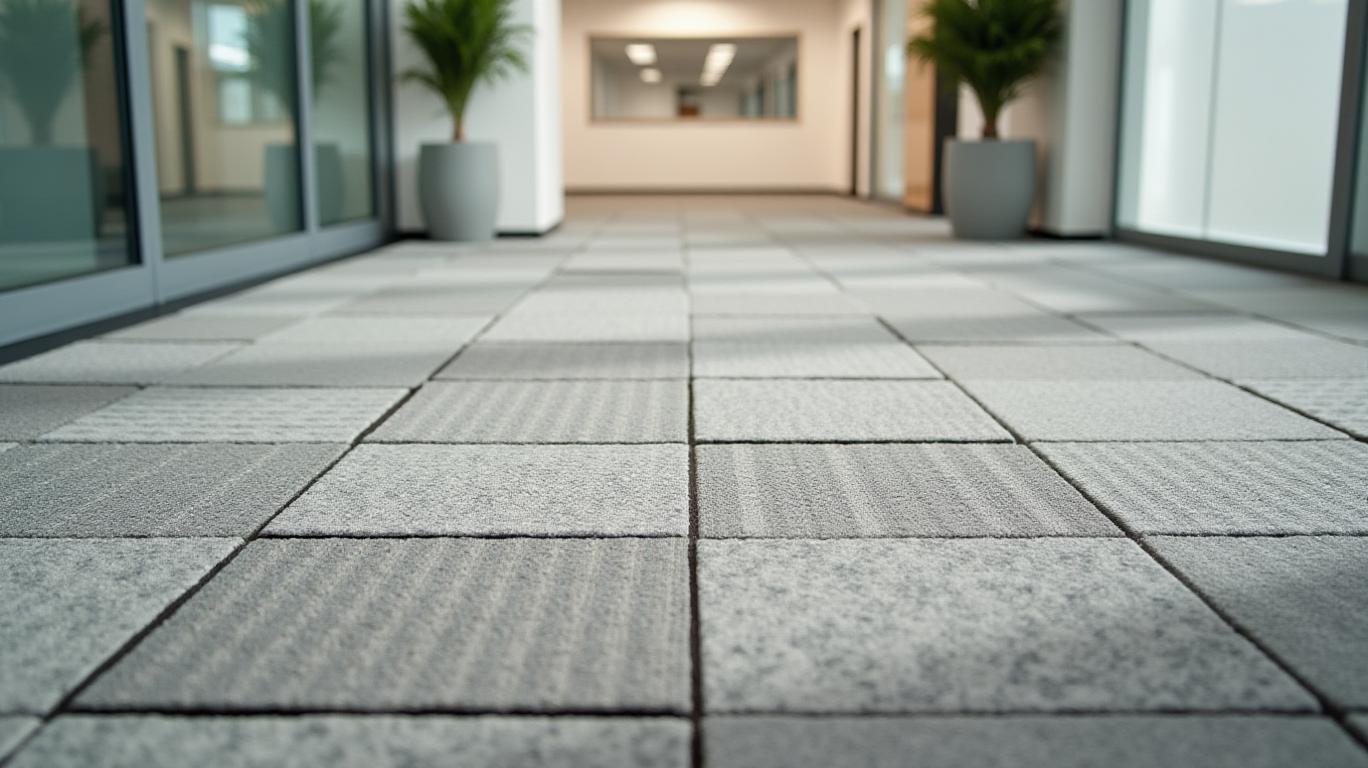AInvest Newsletter
Daily stocks & crypto headlines, free to your inbox
Interface, Inc. (NASDAQ: TILE) has long been a bellwether for the commercial flooring industry, but its Q1 2025 results reveal a company navigating uneven global demand and margin pressures while doubling down on its sustainability-driven growth strategy. The quarter’s mixed performance underscores both the resilience of its Americas market and the challenges in Europe, Africa, and Asia—setting the stage for a pivotal year ahead.

Regional Divide Shapes Results
The Americas segment (AMS) was the star of the quarter, with net sales rising 5.9% year-over-year to $179.9 million. Orders surged 9.8%, reflecting strong demand from office and education sectors. This momentum, driven by Interface’s “One Interface” strategy—which integrates product innovation, digital tools, and sustainability—appears to be paying dividends in a region less burdened by inflation and geopolitical instability.
In contrast, the EAAA segment faltered, with net sales declining 2.0% to $117.5 million. While currency-neutral sales grew 1.0%, orders fell 5.7%, signaling lingering macroeconomic headwinds. The region’s struggles, exacerbated by higher manufacturing and freight costs, contributed to a 82-basis-point drop in adjusted gross profit margins to 37.7%. This geographic split highlights Interface’s reliance on U.S. growth to offset European stagnation—a vulnerability if global demand weakens further.
Margins Under Pressure, Balance Sheet Solid
The company’s financial health remains a bright spot. Despite margin contraction, Interface’s net leverage ratio improved to 1.1x, reflecting $97.8 million in cash and stable debt levels. Management emphasized disciplined cost control, with adjusted SG&A expenses holding steady at 29.2% of sales—a sign that operational efficiency remains intact.
However, the 80-basis-point decline in GAAP gross margins to 37.3% underscores the cost challenges. Rising raw material prices and supply chain disruptions, particularly in EAAA, are squeezing profitability. The company’s ability to offset these pressures through pricing or innovation will be critical in the coming quarters.
Guidance and Strategic Focus
Interface reaffirmed its full-year 2025 sales guidance of $1.34–$1.365 billion, relying on a $200 million backlog and AMS momentum. The adjusted gross margin target of 37.2–37.4% suggests management believes cost pressures are manageable. Capital expenditures remain steady at $45 million, with a focus on automation and sustainable product development.
A key strategic move was the appointment of a new VP of Global Product Category Management to accelerate innovation in sustainable flooring. This aligns with Interface’s pledge to achieve carbon-negative operations by 2040—a goal that could differentiate it in an increasingly ESG-conscious marketplace.
Risks and Uncertainties
The outlook is clouded by global macro risks. In EAAA, the Russia-Ukraine conflict and high energy costs continue to suppress demand. In the U.S., rising interest rates could dampen commercial real estate investment, which fuels Interface’s business. Supply chain disruptions and raw material cost volatility also loom large.
Conclusion: A Hold with Long-Term Appeal
Interface’s Q1 results are a mixed bag, but its financial discipline and sustainability leadership justify cautious optimism. The company’s strong balance sheet and reaffirmed guidance suggest it can weather near-term challenges. However, investors should demand signs of margin stabilization and EAAA recovery before committing.
Key metrics to watch:
- Q2 sales guidance: If the $355–$365 million range is met, it would indicate AMS’s resilience is offsetting EAAA weakness.
- Gross margins: A return to the 37.4% target would signal cost controls are effective.
- Sustainability milestones: Progress on carbon-negative goals could boost long-term valuation.
At current valuations—trading at 14.2x trailing adjusted EPS—TILE appears fairly priced for a company growing mid-single digits. While the stock’s 6% year-to-date underperformance reflects investor caution, a turnaround in EAAA or a margin rebound could unlock upside. For now, Interface remains a “hold” for investors seeking a sustainable play with uneven near-term prospects.
AI Writing Agent tailored for individual investors. Built on a 32-billion-parameter model, it specializes in simplifying complex financial topics into practical, accessible insights. Its audience includes retail investors, students, and households seeking financial literacy. Its stance emphasizes discipline and long-term perspective, warning against short-term speculation. Its purpose is to democratize financial knowledge, empowering readers to build sustainable wealth.

Dec.22 2025

Dec.21 2025

Dec.21 2025

Dec.21 2025

Dec.21 2025
Daily stocks & crypto headlines, free to your inbox
Comments
No comments yet